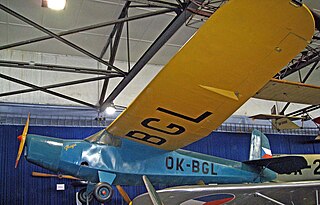
The Praga E.114 was a single-engine sport airplane, designed and manufactured by the Czechoslovakian company ČKD-Praga. Due to its light weight it was also called Air Baby.

The Handley Page Type G was a two-seat British biplane, designed by Handley Page that first flew in 1913. Only one was built.
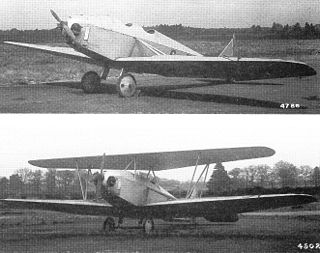
The Parnall Pixie was a low powered British single-seat monoplane light aircraft originally designed to compete in the Lympne, UK trials for motor-gliders in 1923, where it was flown successfully by Norman Macmillan. It had two sets of wings, one for cross-country flights and the other for speed; it later appeared as a biplane which could be converted into a monoplane.
The Indraéro Aéro 30 is a single seat, single engined sports biplane designed in France in the late 1960s. Only one was built.
The Perry Beadle T.1 was a single-seat, single engine biplane built and flown in the United Kingdom in 1913. In 1914 it flew with a more powerful engine and other modifications as the Perry Beadle T.2, which was acquired by the Royal Navy Air Service at the outbreak of World War I.

The Farman FF 65 Sport was a French built light biplane, with a single engine and tandem seats, intended for sport and touring. First flown in 1919, it achieved modest sales at home and abroad in the early 1920s. Two unusual modifications produced a biplane glider and a low aspect ratio parasol wing machine.

The ASL Viking was a single-engined two seater biplane aircraft designed and built by Horatio Barber's Aeronautical Syndicate Ltd. at Hendon. It was first flown in January 1912.
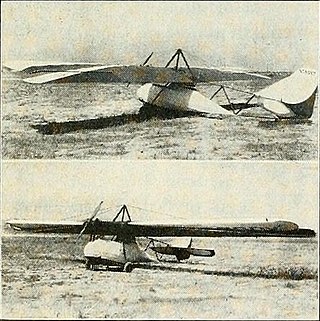
The Cycloplane C-1 was a motorized, open-frame primary glider built in the U.S. in the early 1930s. Six, including a single cleaned-up version, the C-2, were built. Two more were built as the Champion B-1.
The Lightwing Type 4 Rooster is an experimental biplane glider, capable of powered or unpowered flight, built in the UK in the 1980s to explore the properties of this unusual glider configuration.

The Hanriot 1909 monoplane was an early French aircraft constructed by Rene Hanriot, a successful automobile racer.
The Star Monoplane was an early British aircraft built by the Star Engineering Company of Wolverhampton. A tractor configuration monoplane resembling the French Antoinette aircraft, its most remarkable feature was the arrangement of the rear control surfaces. It was exhibited at the Aero Exhibition at Olympia in London, in 1910.
The Schütte-Lanz D.VI was a single engine, parasol wing fighter aircraft designed and built in Germany towards the end of World War I. It had a very short career, crashing on its first flight.
The Bonomi BS.4 Basettino was a primary glider designed and built in Italy in the 1930s.
The Bonomi BS.22 Alzavola was a training motor glider, intended to acquaint capable glider pilots with the characteristics of powered aircraft. The sole example was designed and built in Italy in the mid-1930s.
The Caproni Vizzola MF and 2 were single-seat gliders built in Italy just before World War II. Intended as training aircraft capable of aerobatics, the two variants differed only in their fuselages. Only one of each was built, but they were both successful in Italian competitions.
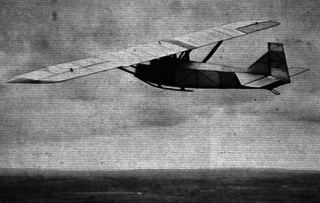
The 1926 German RRG Prüfling of 1926 was a secondary training glider designed for club use. Plans were sold and it was built in Germany and across the world.
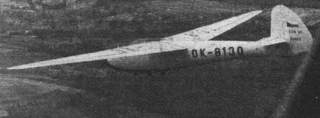
The Zlín Šohaj series of club gliders began as a post World War II development of the DFS Olympia Meise. A large number were built in the 1940s and '50s.
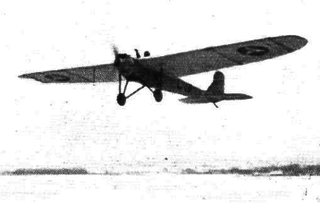
The Daimler L15, sometimes later known as the Daimler-Klemm L15 or the Klemm-Daimler L15 was an early two-seat low-powered light aircraft intended to popularise flying. In mid-career it flew as a glider.

The Caudron C.140 was a French tandem cockpit sesquiplane designed in 1928 as a combination of liaison aircraft and observer and gunnery trainer.

The Caudron C.67 was a simple single seat biplane with a low powered engine. It was built and flown in France in 1922.












